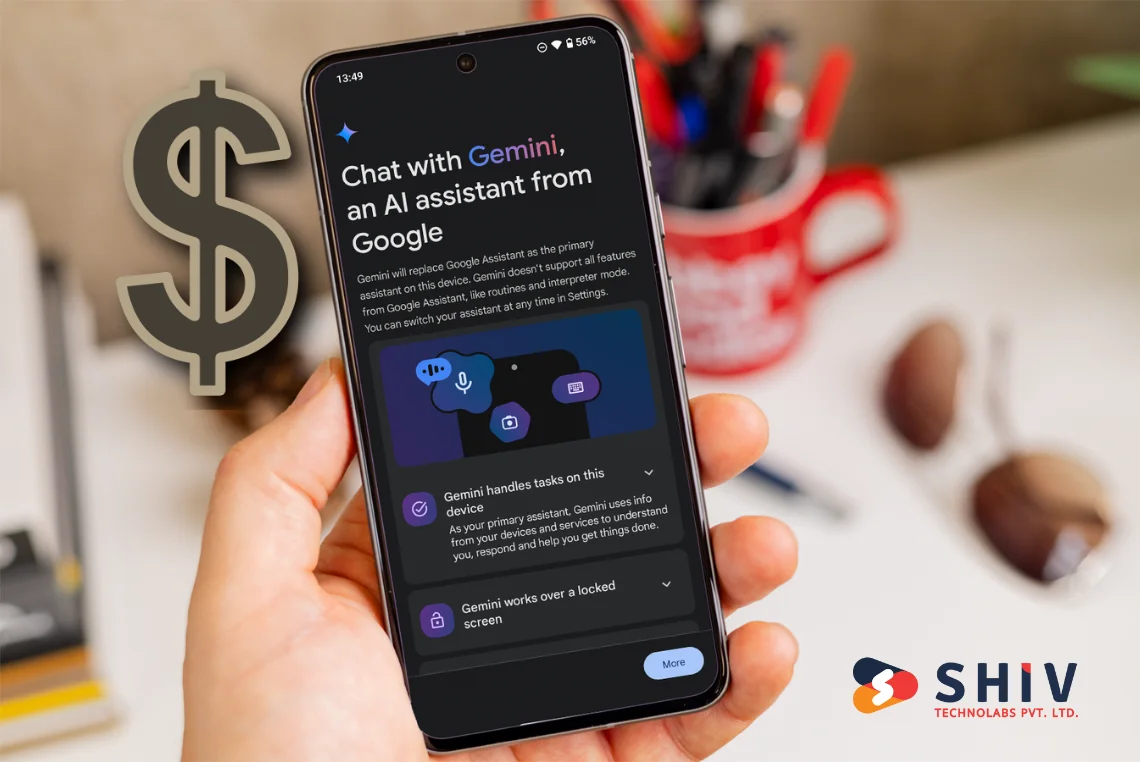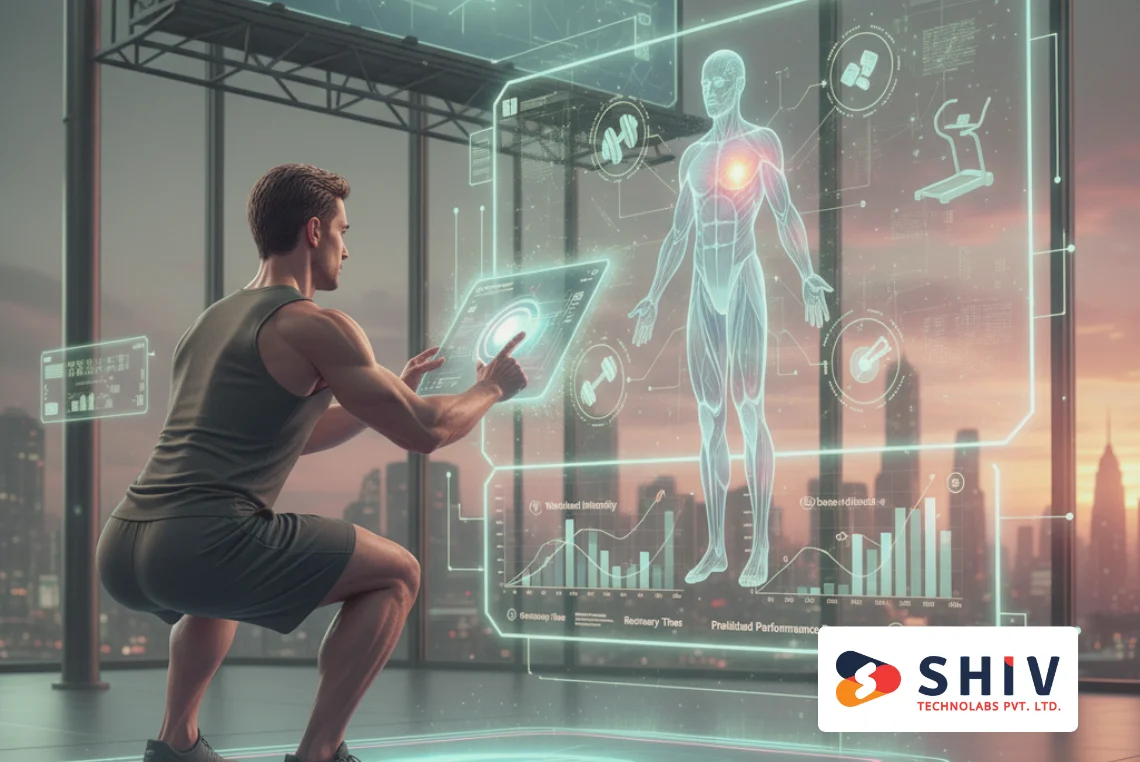Table of Contents
Artificial intelligence (AI) has become central to improving efficiency in many industries. For restaurants, integrating AI technologies boosts operational accuracy and customer satisfaction. Restaurant AI includes innovative tools like smart ordering systems, AI-powered menu recommendations, and restaurant chatbots for customer engagement. This article will clearly explain how AI benefits restaurants and provide practical guidance for its integration into your business.
How AI is Transforming Ordering Systems in the Restaurant Industry

Artificial intelligence (AI) significantly changes how restaurants handle orders, making processes faster, smoother, and more accurate. AI in restaurants helps meet rising customer expectations for speed, precision, and personalization. Restaurants that adopt AI ordering technology not only improve operational efficiency but also boost customer satisfaction and sales.
1. Automated Ordering Systems in the Food Industry
Automation remains a critical driver of efficiency in modern restaurants. AI-powered automated ordering systems allow restaurants to accept orders quickly, accurately, and around the clock without human intervention.
Automated ordering significantly reduces waiting time, enhancing customer satisfaction. These systems can manage large volumes of orders effortlessly, making them ideal during peak hours and busy weekends.
Key benefits of automated ordering systems include:
- Improved Accuracy: Orders placed via AI systems contain fewer mistakes compared to manual orders.
- Increased Efficiency: Automation speeds up the entire ordering process, enabling faster service.
- Labor Cost Reduction: Restaurants decrease labor costs by automating repetitive ordering tasks.
For instance, McDonald’s widely uses AI-driven self-service kiosks, improving order speed and accuracy while minimizing wait times.
2. Smart Ordering Systems Through Interactive Kiosks
Smart ordering systems featuring interactive kiosks provide intuitive digital touchpoints for customers. These AI-powered kiosks enhance customer interactions by simplifying the ordering process. Customers interact directly with digital menus, enabling clear communication and reducing misunderstandings.
Interactive kiosks offer multiple advantages:
- Customized Ordering: Customers quickly modify orders based on preferences and dietary requirements.
- Instant Menu Updates: Restaurants promptly introduce new menu items or update pricing without printing new menus.
- Data Collection: AI-driven kiosks gather valuable insights about customer preferences and ordering habits.
An excellent example is Panera Bread. Their AI-integrated kiosks allow customers to personalize orders effortlessly, enhancing customer satisfaction and boosting sales.
3. Voice-Activated Ordering for Superior Customer Experience
Voice technology continues growing rapidly in popularity, especially in food service. Restaurant AI now includes voice-activated ordering, enabling customers to place orders using speech. Customers appreciate voice ordering for its ease and convenience, especially when using mobile apps or drive-thru services.
Voice-activated ordering systems provide:
- Hands-Free Convenience: Customers order easily without manual interaction.
- Increased Speed: Voice commands streamline ordering, significantly shortening transaction times.
- Higher Accessibility: Customers with disabilities benefit from voice-activated technology, increasing accessibility.
Domino’s successfully uses voice technology through its assistant named “Dom”. Customers conveniently place orders through voice commands, boosting loyalty and order frequency.
4. AI-Powered Menu Recommendations for Restaurants
AI-driven menu recommendations offer personalized food choices tailored to individual customer preferences. Restaurants effectively apply food AI by using data-driven insights to recommend suitable menu items to customers, increasing customer satisfaction and repeat business.
These recommendations utilize previous orders, customer behavior, seasonal trends, and menu popularity to suggest appropriate dishes.
Key benefits include:
- Increased Customer Engagement: Customers feel understood and valued, encouraging repeat visits.
- Higher Average Order Value: Personalized recommendations prompt customers to explore additional menu items.
- Data-Driven Decisions: AI suggestions rely on precise customer data, minimizing guesswork and maximizing relevance.
Starbucks employs AI-powered menu recommendations via their app, providing personalized drink suggestions based on past orders, significantly enhancing the customer experience.
5. Restaurant Chatbots for Customer Engagement
Restaurant chatbots powered by AI efficiently manage customer interactions, providing real-time responses to queries. AI chatbots for customer service handle reservations, answer frequently asked questions, and assist with online orders. Restaurants adopting chatbots greatly improve their customer service quality.
Chatbots benefit restaurants in several critical ways:
- 24/7 Customer Support: AI chatbots instantly answer questions anytime, improving customer satisfaction.
- Reduced Wait Times: Instant responses minimize wait times, increasing overall service efficiency.
- Enhanced Marketing Opportunities: Chatbots suggest menu items, promote specials, and collect valuable customer feedback.
For example, Pizza Hut implemented AI-driven chatbots, significantly improving customer interactions and simplifying online ordering processes.
Restaurants leveraging these AI tools see significant operational improvements, happier customers, and increased profitability. As AI technology evolves, its impact on restaurant ordering systems will continue growing, redefining the dining experience for customers worldwide.
Also Read: Restaurant Website Design And Development Cost: Affordable Solutions For High Impact
Real-World Benefits of Implementing AI in Restaurants
Integrating Artificial Intelligence (AI) provides restaurants with direct, practical advantages. AI-driven solutions help restaurants solve common challenges, increase efficiency, and boost customer satisfaction. Here are the key real-world benefits clearly explained:
1. Improved Order Accuracy and Efficiency
AI-powered ordering systems reduce mistakes common in manual processes. Automated ordering systems in the food industry manage large volumes of orders quickly, with fewer errors. Customers get exactly what they order, resulting in higher satisfaction and reduced waste from incorrect orders. Restaurants using AI ordering systems see:
- Faster service times.
- Reduced customer complaints.
- Higher customer retention due to improved reliability.
Also Read: Revolutionizing Food Waste: Smart Collection & Disposal Solutions
2. Enhanced Customer Engagement through AI Chatbots
Restaurant chatbots for customer engagement provide immediate responses to customer inquiries. AI-driven chatbots efficiently handle reservations, answer menu-related questions, and manage online orders. This responsiveness greatly improves customer satisfaction and frees staff to focus on in-person service. Specific advantages include:
- 24/7 customer support availability.
- Quick handling of frequent customer inquiries.
- Increased customer satisfaction due to prompt service.
Also Read: 20 Best Practices For Integrating AI Chatbots With Your Business
3. Personalized Customer Experiences
AI-powered menu recommendations enable restaurants to deliver highly personalized dining experiences. By analyzing customer preferences and historical orders, AI provides tailored recommendations, increasing customer satisfaction and repeat visits. Customers feel appreciated when menus cater specifically to their tastes. Benefits for restaurants include:
- Increased average order value through targeted suggestions.
- Improved customer loyalty and return visits.
- Higher engagement and better dining experiences.
4. Efficient Inventory Management
AI-driven inventory management accurately predicts required inventory levels, reducing waste and lowering operational costs. This predictive accuracy helps restaurants stock precisely what’s needed, eliminating excess or shortage issues. Restaurants significantly reduce costs related to spoilage and unnecessary storage. Real-world inventory management advantages are:
- Lowered food waste by accurately forecasting demand.
- Reduced inventory-related expenses.
- Increased profitability through precise management.
5. Predictive Analytics for Better Decision-Making
Predictive analytics in food service empowers restaurants with accurate insights to anticipate customer demand, staffing needs, and menu preferences. Using historical sales data, restaurants plan operations more efficiently, minimizing unexpected issues and improving customer satisfaction. Practical benefits include:
- Enhanced scheduling efficiency.
- Optimized menu offerings to match customer demands.
- More profitable operations through accurate forecasting.
Also Read: How to Build Predictive Analytics Models With AI
6. Effective Restaurant Marketing with AI
AI in restaurant marketing significantly improves promotional efforts by targeting customers precisely. Restaurants analyze customer data from previous interactions to offer personalized marketing campaigns, increasing response rates and sales. AI-driven marketing effectively boosts customer engagement and brand loyalty. Restaurants using AI marketing strategies experience:
- Higher success rates in promotional campaigns.
- Greater customer retention and repeat business.
- Increased revenues from targeted marketing efforts.
7. Reduced Labor Costs
Adopting AI technology reduces labor costs by automating repetitive tasks such as order taking, answering customer queries, and inventory tracking. Staff members can concentrate on essential customer-facing roles, improving overall service quality. Key labor-related benefits of AI:
- Reduction of manual and repetitive tasks.
- Decreased operational labor costs.
- Improved employee productivity and job satisfaction.
AI solutions offer measurable, practical benefits to restaurants, including improved accuracy, personalized customer experiences, cost-effective inventory management, and successful marketing. Adopting AI helps restaurants remain competitive and profitable in the evolving industry.
Also Read: Steps and Cost to Develop a Restaurant Waitlist App
How to Successfully Implement AI in Your Restaurant: A Step-by-Step Guide

Integrating Artificial Intelligence (AI) into your restaurant can significantly improve efficiency, customer satisfaction, and profitability. However, the process must be well-planned. Here’s a straightforward, practical step-by-step approach to smoothly adopt AI technology into your restaurant:
Step 1: Identify Your Restaurant’s Specific Needs
Begin by clearly defining what problems you want AI to solve. Not all restaurants require the same solutions. Smaller establishments might prioritize AI chatbots for customer service, while larger chains may need AI-driven inventory management or predictive analytics in food service.
Consider these common focus areas:
- Faster, error-free ordering (automated ordering systems in the food industry)
- Personalized customer experience (AI-based menu recommendations for restaurants)
- Improved marketing effectiveness (AI in restaurant marketing)
Step 2: Choose the Right AI Solutions
Once you pinpoint your goals, select appropriate AI technologies that match your restaurant’s requirements. Assess available platforms carefully and consider user-friendliness, scalability, and customer support.
Popular restaurant AI solutions include:
- Smart ordering systems, like interactive kiosks or voice ordering technology.
- AI-powered inventory tools for precise stock management.
- AI-driven marketing platforms offering targeted customer campaigns.
Step 3: Plan Your Integration Strategy
Careful planning ensures a smooth transition. Outline clearly how the new AI tools will connect to existing systems, like your POS (Point-of-Sale) software or inventory tracking platforms. Create an implementation timeline and communicate changes clearly to your team.
Key considerations:
- Compatibility with current restaurant technology.
- Timeline for phased integration.
- Employee training and ongoing support.
Step 4: Train Your Staff Thoroughly
Successful AI implementation depends greatly on staff training. Employees must feel comfortable using the new technology. Provide comprehensive training sessions, offer clear instructions, and encourage feedback from staff.
Training tips:
- Conduct practical demonstrations.
- Provide simple user manuals or guides.
- Assign a team leader to support the staff during the transition.
Step 5: Monitor and Measure Results
After deploying AI solutions, regularly monitor results to determine effectiveness. Track key performance indicators (KPIs) such as customer satisfaction scores, average order accuracy, inventory waste reduction, and sales growth.
Useful KPIs include:
- Reduction in ordering mistakes.
- Increase in customer retention rates.
- Improved efficiency in inventory usage.
Implementing AI in your restaurant is achievable by clearly defining goals, choosing appropriate solutions, careful planning, thorough staff training, and ongoing evaluation. Following these steps ensures a successful integration, positioning your restaurant for future growth and improved operational performance.
Real-World Examples: How Restaurants Successfully Use AI
Restaurants worldwide are using AI technology to boost efficiency and enhance customer experiences. Here are practical examples of how major brands use AI effectively:
1. McDonald’s: AI-Driven Drive-Thrus and Kitchen Monitoring
McDonald’s has integrated AI to improve its drive-thru and kitchen operations:
- Uses AI-powered voice recognition to speed up drive-thru orders, improving accuracy and reducing wait times.
- Deploys AI sensors in kitchens to predict maintenance needs, reducing equipment downtime and enhancing service quality.
These AI initiatives aim to alleviate employee stress and enhance the overall customer experience.
2. Domino’s: Voice Ordering and Customer Service Chatbots
Domino’s has embraced AI to streamline the ordering process and improve customer engagement:
- Implemented voice-activated ordering through their mobile app, providing customers with convenient hands-free ordering.
- Developed AI chatbot “DOM,” available on platforms like Facebook Messenger, improving customer interaction and increasing online orders.
These AI-driven solutions have contributed to a significant increase in online orders and improved customer satisfaction.
3. Chipotle: Personalized Marketing and Kitchen Automation
Chipotle has leveraged AI to personalize customer experiences and enhance kitchen efficiency:
- Leverages AI to create targeted digital marketing campaigns based on customer preferences, driving engagement and repeat visits.
- Tests an AI-powered robotic assistant (“Chippy”) to automate making tortilla chips, ensuring consistent quality and reducing labor.
These AI applications have enabled Chipotle to enhance operational efficiency and offer personalized experiences to customers.
These examples show how AI implementation leads to tangible benefits, including faster operations, personalized customer interactions, and increased profitability.
Transform Your Restaurant with Shiv Technolabs’ AI-Powered Website and App Development Services
Shiv Technolabs specializes in creating high-quality, innovative restaurant websites and mobile apps integrated with advanced AI features. Our experienced team develops solutions tailored specifically to enhance customer experiences and operational efficiency for restaurants.
# Why Restaurants Choose Shiv Technolabs:
- Deep industry experience in food tech and digital transformation.
- Scalable and secure backend systems.
- Full support from development to launch and beyond.
- Integration with POS, payment gateways, delivery platforms, and third-party services.
Whether you’re launching a new food venture or upgrading your existing system, Shiv Technolabs delivers future-ready digital platforms that support business growth. From smart ordering to real-time inventory control, we help you serve customers better, with less effort.
Conclusion
AI in restaurants is no longer a luxury—it’s becoming a necessity for staying ahead. From smart ordering systems and personalized menus to predictive analytics and AI-driven inventory management, these technologies bring real, measurable value. Restaurants that adopt AI solutions experience better service accuracy, reduced waste, and stronger customer loyalty.
At Shiv Technolabs, we help restaurants build intelligent digital platforms tailored for long-term growth. Our AI-powered website and app solutions for restaurants are designed to meet the evolving needs of modern food businesses.
📩 Ready to bring AI into your restaurant business?
Get in touch with Shiv Technolabs for custom restaurant website and app development built to scale with your goals.























